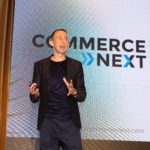At a time where personalization is vital to creating smooth digital experiences for your customers, it is actually harder to achieve than ever before. With demanding customers and stricter privacy standards, this new year comes with new challenges for retailers. In a recent webinar, “A New Year, A New Ecommerce Reality: Differentiating Through Digital Experience” leaders in the ecommerce industry put their heads together to solve these issues.
What we learned:
- Approach your retail website by bringing the in-store experience to ecommerce.
- No customer is the same! When creating online experiences, you need to understand the psychology of the customer and what they are trying to achieve on the website.
- Your digital experience must honor your brand in order to resonate with your customer.
Speakers:
- Sabrina Cherubini, SVP Brand & Digital Marketing, Hanky Panky
- Joe Milano, SVP Global Digital & Customer Experience, kate spade
- Christine Monaghan, VP Digital, Astral Brands
- Marylin Montoya, VP Marketing, AB Tasty
- Moderated by Allan Dick, Co-Founder, CommerceNext
Keep reading for the webinar’s key insights or watch the recording below.
AB Tasty, which specializes in experience optimization, believes that brands need to provide relevant content to their consumers to remove frustration in their digital experiences. New privacy changes have pivoted their work to be centralized around first party data collection and consumer empowerment to attain valuable customer data.
The Three Biggest Challenges in Optimization
- Speed
- Agility
- Alignment
In order to bypass these challenges, brands need to understand the complex development cycles in ecommerce, make an impact on the go-to market and take advantage of every data component they can access.
The Two Optimization Types
Improve. Adapt. Anticipate. Exceeding customer expectations requires cross-team collaboration. Data insights should be fed back to the customer data platform (CDP) for further learning.
The two main types of optimization are: low tech, high impact and high tech, high impact. Low tech may include optimization with CDPs and analytics tools, which would be on the client side. This may include testing messaging to increase sales revenue or catering content based on audience, or evaluating new versus returning customers. On the other hand, high tech optimization includes driving personalised experiences on native app experiences. This requires more resources and highly skilled technical teams.
Be Authentic
Personalized customer digital experiences can be extremely effective, yet according to kate spade new york, “At the core it has to convey who you are.” Personalization for the sake of personalization is not as valuable as a well thought out digital experience that embodies a brand’s identity and expression, or the true essence of a brand.
Additionally, brands must understand the psychology of their customers and what their intentions are to create valuable customer experiences. One way Astral Brands achieves this is through testing, providing value added experiences or giving quizzes to their customers—all with the hope of creating a deeper relationship with their customer. This also requires the recognition that no two customers are the same, even if they may sometimes have similar interactions with the brand.
Bringing The In-Store Experience To Your Website
When the pandemic first shut stores down, retailers scrambled to create valuable experiences for their customers on their websites that compared to the beloved in-store experience. Now, many brands are perfecting their websites to bring the experiences to life.
One of the most significant losses from moving the in-store experience online is the ability for a store associate to quickly decipher what a customer is looking for. According to Kate spade New York, transitioning to an online shopping experience requires brands to think, “How do you approximate what that experience should look and feel like depending on who that customer is, what their purpose is for visiting that day?” This is where data comes in to help determine how to best serve that customer. In the digital realm, brands have the flexibility to morph a customer journey into whatever that customer needs at that moment.
Investing In “The Wow”
Oftentimes, investing in the more showy user experience won’t necessarily lead to a transaction, which equates to an opportunity cost.
Instead, create user experiences that your customers actually want. How? Get the information directly from the source and ask your most loyal customers what they want from their ecommerce experience on your site. Additionally, AB Tasty recommends that every digital experience you create should be made with a particular customer base in mind. This avoids “the wow” for the sake of something different and the loss of potential transactions.
Personalization is a vital aspect of ecommerce, and these brands, just like all retailers alike, are navigating the waters of the new year in marketing. To learn more about personalization and what’s in store for 22, check out our blog posts: Opportunities and Challenges of Personalization At Scale, or Personalized Engagement—How To Stop Frustrating Your Customers.
Related Posts
-
Is Your Loyalty Program Driving Growth this Holiday Season?
Loyal customers are the steady heartbeat of a healthy business.…
-
Unlocking Zero-Party Data with Loyalty
As demands for greater internet privacy and data protection ramp…
-
How Retailers Are Investing In Digital Customer Experience
Time is the most precious resource. Within our twenty-four hour…
-
How Walmart Adapts Customer Experience for the Digital Shopper
Walmart.com is anything but basic. The retailer is perhaps best…
-
Elevating Customer Experience for Ecommerce Growth
In our latest webinar, Elevating Customer Experience for Ecommerce Growth,…






